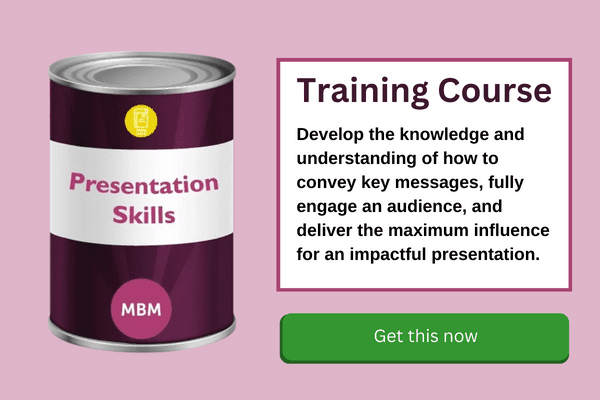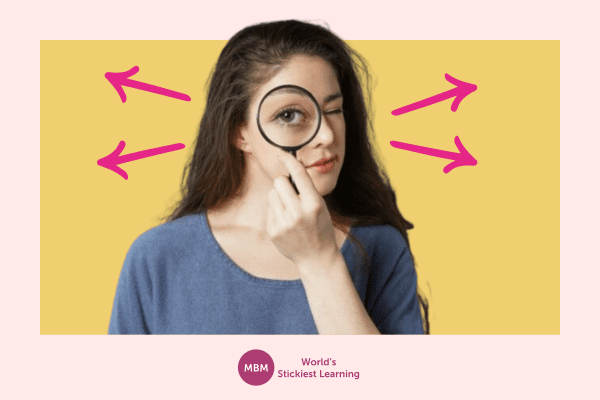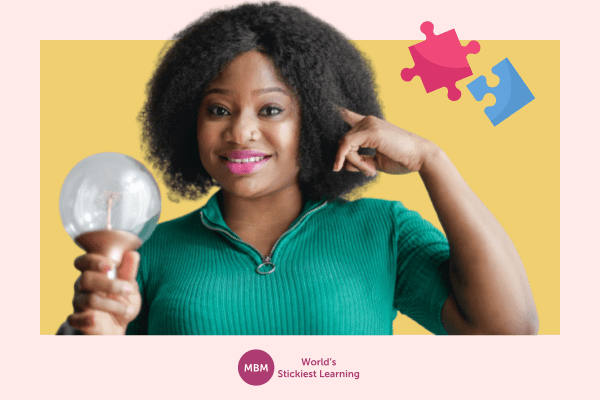Decoding the Silent Language of Successful Presentations
Have you ever wondered why some presentations captivate us while others leave us yawning? It’s not just about what’s said; it’s how it’s conveyed. Welcome to the silent language of body talk, where every gesture, every glance, and every stance speaks volumes. We’ve compiled a comprehensive guide on body language for presentations and how to wield it effectively. From mastering eye contact to perfecting your posture, each tip is designed to elevate your presentation skills and leave a lasting impression on your audience.

Why is Your Body Language in Presentations Important?
Understanding the importance of body language in presentations is crucial for effectively conveying your message and engaging your audience. While words carry meaning, research suggests that nonverbal cues, including body language, make up a significant portion of communication.
Experts in interpersonal communication have estimated that nonverbal communication constitutes approximately 70 per cent of what is involved in communication. In other words, only about 30 per cent of communication is verbal. By harnessing the power of body language, presenters can enhance the clarity and impact of their message, establish credibility and rapport with their audience, and captivate attention through dynamic and engaging delivery.
Here’s our essential guide to mastering body language in presentations:
1- Align Your Body Language With Your Message

Aligning your body language with the content and tone of your presentation is essential for effective communication. It ensures that your nonverbal cues reinforce your message and create a cohesive and compelling presentation experience for your audience. By being mindful of your body language and its impact on your message, you can elevate the effectiveness of your communication and also enhance audience engagement and understanding.
Tips for Aligning Body Language With Message:
- Consider your objectives: Before your presentation, clarify the objectives and key messages you want to convey. Tailor your body language to align with these goals, whether you aim to inform, persuade, or inspire your audience. Matching your nonverbal cues to your message enhances clarity and resonance.
- Adapt to your audience: Be sensitive to the preferences and cultural norms of your audience when adjusting your body language. Different demographics may respond differently to certain gestures or expressions, so adapt your approach to foster rapport and connection with your specific audience.
- Practice authenticity: Authenticity is key to effective communication. Ensure that your body language reflects your genuine thoughts, emotions, and intentions. Authenticity builds trust and credibility with your audience, facilitating meaningful connection and engagement.
- Use mirroring techniques: Mirroring is a powerful way to establish rapport and build trust with your audience. Subtly mimic the body language and expressions of receptive audience members to create a sense of unity and understanding. Mirroring fosters connection and receptivity to your message, enhancing communication effectiveness.
- Be consistent: Maintain consistency between your verbal and nonverbal communication throughout your presentation. Ensure that your body language complements and reinforces your spoken words, rather than contradicting or undermining them. Consistency enhances coherence and clarity, facilitating audience comprehension and retention.
Sticky Learning ® is 7 times more effective than 1-day training courses. Plus, you will get a Chain of Evidence proving your Return on Investment. Discover soft skills training that changes behaviours long term.

2- Perfect Your Posture for Poise and Authority

Your posture serves as the foundation of your presence, conveying confidence and authority before you even utter a word. Mastering your posture can significantly enhance your presentation’s impact and ensure that your message is received with credibility and respect. This is an important body language in presentations as you set the stage for a compelling and persuasive delivery.
Tips for Perfecting Your Posture:
- Maintain a strong foundation: Ground yourself by evenly distributing your weight between both feet. Avoid leaning to one side or slouching, as this can detract from your authority and presence. Instead, stand tall with your shoulders back and your chest open, projecting confidence and assurance.
- Engage your core: Activate your core muscles to support your posture and maintain stability throughout your presentation. A strong core not only improves your posture but also enhances your overall presence and command of the room.
- Practice mindful alignment: Pay attention to the alignment of your body, ensuring that your spine is straight and your head is held high. Imagine a string pulling you upward from the crown of your head, elongating your spine and also lifting your posture to its full potential.
- Avoid tension: While maintaining a strong posture, be mindful of unnecessary tension in your muscles. Relax your shoulders, neck, and facial muscles to prevent stiffness and promote a sense of ease and comfort. A relaxed posture exudes confidence and approachability, inviting your audience to engage with your message.
- Visualise confidence: Before stepping onto the stage, visualise yourself as confident and poised. Imagine yourself standing tall, making eye contact with ease, and delivering your message with conviction. This mental rehearsal can help boost your confidence and reinforce positive posture habits.
- Seek feedback: Ask for feedback on your posture from trusted colleagues or mentors. They can provide valuable insights into areas for improvement and offer guidance on how to refine your posture for maximum impact. With practice and awareness, you can perfect your posture and elevate your presentation skills to new heights.
3- Master Eye Contact to Build Trust

Eye contact is a powerful tool for building trust and connection with your audience during presentations. When utilised effectively, it can convey sincerity, confidence, and engagement, fostering a sense of rapport and receptivity. This is an important body language in presentations as you can enhance your credibility as a presenter and create a more compelling and memorable presentation experience for your audience.
Tips for Mastering Eye Contact:
- Establish a connection: Begin your presentation by making eye contact with individuals in the audience. Scan the room and connect with different audience members, making brief but meaningful eye contact with each person. Establishing this initial connection sets the stage for a more engaging and interactive presentation.
- Maintain consistent eye contact: Throughout your presentation, maintain consistent eye contact with your audience. Avoid fixating on one individual or section of the room, as this can alienate other audience members and diminish the sense of connection. Instead, distribute your eye contact evenly and inclusively across the room.
- Use eye contact to convey confidence: Confidence is often communicated through steady and confident eye contact. Maintain a relaxed and assured gaze as you speak, projecting confidence and authority in your message. Remember to blink naturally and avoid staring, as this can come across as aggressive or intimidating.
- Show genuine interest: Demonstrate genuine interest and engagement in your audience by actively listening and responding to their reactions. Use your eye contact to gauge audience feedback and adjust your delivery accordingly. Acknowledge nods, smiles, and other nonverbal cues with reciprocal gestures and expressions.
- Practice with purpose: Incorporate deliberate eye contact practice into your presentation rehearsals. Use a mirror or recording to monitor your eye contact and identify areas for improvement. In addition, experiment with different techniques, such as scanning the room or focusing on specific individuals, to find what works best for you.
4- Engage Your Audience With Purposeful Motion

Movement can transform your presentation from a static event into a dynamic experience that captivates your audience. Instead of confining yourself to one spot, leverage the stage to create visual interest and command attention. This is an important body language in presentations as you establish a connection with your audience and infuse your presentation with energy and vitality.
Tips for Dynamic Movement:
- Use the entire stage: Explore the space available to you and make deliberate movements to different areas of the stage. This not only keeps your audience visually engaged but also emphasises your points and adds depth to your presentation.
- Incorporate gestures with movement: Combine gestures with movement to enhance your message. Use your hands and body to illustrate concepts, emphasise key points, and maintain audience engagement. Ensure that your gestures are natural and purposeful, adding clarity and impact to your delivery.
- Practice smooth transitions: Plan your movements and transitions between points to ensure fluidity and coherence. Avoid abrupt changes or erratic pacing, as these can distract from your message and disrupt the flow of your presentation. Smooth transitions help maintain momentum and keep your audience focused.
- Be mindful of pacing: Pay attention to the pace of your movement, adjusting it to match the tone and content of your presentation. Vary your speed to maintain interest and create a sense of rhythm, but avoid rushing or lingering unnecessarily. A well-paced presentation keeps the audience engaged and allows for effective communication.
- Use movement to enhance storytelling: Integrate movement into your storytelling to bring your narrative to life. Walk through scenarios, physically demonstrate processes, or act out anecdotes to engage the audience and make your stories more compelling and memorable.
- Seek feedback: Rehearse your movements and solicit feedback from peers or mentors. They can offer valuable insights into your presence, body language, and overall presentation style, helping you refine your movements for maximum impact.
5- Connect With Your Audience

Mirroring is a powerful technique for establishing rapport and building trust with your audience. By subtly mimicking the body language and gestures of your audience members, you can create a sense of unity and understanding that enhances communication and engagement. This is an important body language in presentations as it allows you to connect with your audience on a deeper level and create a more immersive and interactive presentation experience.
Tips for Mirroring and Building Rapport:
- Observe your audience: Pay attention to the body language and gestures of your audience members. Notice their posture, facial expressions, and movements to gain insight into their thoughts and feelings. Observing your audience allows you to identify opportunities for mirroring and tailor your approach to their preferences and reactions.
- Mirror subtly: Mimic the body language and gestures of receptive audience members subtly and naturally. Match their posture, gestures, and expressions to create a sense of connection and alignment. Mirroring should be done discreetly and without drawing attention to yourself, allowing your audience to feel understood and validated.
- Be authentic: While mirroring is an effective technique for building rapport, it’s essential to remain authentic and genuine in your interactions. Avoid overdoing it or mimicking behaviours that feel unnatural or insincere. Instead, focus on mirroring subtle cues and gestures that convey empathy and understanding, fostering genuine connection and rapport with your audience.
- Practice active listening: Actively listen to your audience and respond to their nonverbal cues and feedback. mirroring as a way to demonstrate your attentiveness and engagement, reinforcing your connection with your audience and also enhancing communication effectiveness. Active listening fosters a sense of reciprocity and mutual understanding, creating a more collaborative and also interactive presentation environment.
6- Handle Q&A Sessions with Confidence

The Q&A session is your opportunity to further engage with your audience, clarify any points, and address their inquiries effectively. By mastering the art of handling Q&A sessions, you can showcase your expertise, build credibility, and leave a lasting impression on your audience. Approach the Q&A session with confidence and readiness to tackle any questions that come your way, enhancing the overall success of your presentation.
Tips for Handling Q&A Sessions:
- Prepare in advance: Anticipate potential questions your audience may ask and prepare thoughtful responses in advance. Consider common concerns, controversial topics, or areas of confusion related to your presentation. Having prepared answers will help you respond confidently and eloquently during the Q&A session.
- Listen actively: Actively listen to each question posed by your audience members, giving them your full attention and respect. Avoid interrupting or rushing through their questions, and instead, take a moment to digest and understand the inquiry before responding. Active listening demonstrates your commitment to addressing their concerns and fosters a positive rapport with your audience.
- Clarify and restate: If a question is unclear or ambiguous, politely ask for clarification to ensure that you understand the audience member’s intent. Restate the question before answering to ensure that everyone in the audience is on the same page. This also provides you with an opportunity to confirm the question’s meaning and context before formulating your response.
- Respond confidently: Answer each question with confidence and conviction, drawing upon your expertise and knowledge. If you’re unsure about a particular topic, don’t hesitate to admit it and offer to follow up with additional information later.
- Stay concise: Keep your responses clear, concise, and focused on addressing the audience member’s question. Avoid going off on tangents or providing excessive detail that may confuse or overwhelm your audience. Aim to provide thorough yet succinct answers that address the core of the inquiry while respecting everyone’s time and attention.
- Manage time effectively: Be mindful of the time allotted for the Q&A session and pace your responses accordingly. If time permits, allow for additional questions and interactions with the audience. However, if time is limited, prioritise the most relevant and impactful questions to ensure that all audience members have a chance to participate.
7- Overcome Nervous Habits

Nervous habits can undermine your confidence and distract your audience from your message. This can throw off your body language in presentations. However, with mindful awareness and proactive strategies, you can effectively manage these habits and project an aura of confidence and poise throughout your presentation. This is an important body language aspect in presentations as you can elevate your delivery and ensure that your message resonates with clarity and impact.
Tips for Calming Nervous Habits:
- Identify your triggers: Take note of the situations or moments that trigger your nervous habits. Whether it’s speaking in front of a crowd or facing a challenging question, understanding your triggers can help you anticipate and manage your reactions more effectively.
- Practice relaxation techniques: Incorporate relaxation techniques into your pre-presentation routine to calm your nerves. Deep breathing exercises, progressive muscle relaxation, and mindfulness meditation can help alleviate anxiety and promote a sense of calm and focus.
- Channel nervous energy: Instead of allowing nervous energy to manifest as distracting habits, channel it into purposeful movement and gestures. Use your body language to convey confidence and enthusiasm, and let your energy drive the momentum of your presentation.
- Maintain a positive mindset: Cultivate a positive mindset by focusing on your preparation and expertise rather than dwelling on potential pitfalls or insecurities. Visualise yourself delivering a successful presentation with confidence and conviction, reinforcing your belief in your abilities.
- Practice self-awareness: Stay attuned to your body and mind throughout your presentation, monitoring for signs of nervousness and adjusting accordingly. Take deep breaths, ground yourself with a steady posture, and remind yourself of your competence and value as a presenter.
- Seek support: Don’t hesitate to seek support from trusted colleagues, mentors, or friends. They can offer encouragement, feedback, and perspective to help you navigate nervousness and build confidence in your presentation skills. With practice and support, you can overcome nervous habits and deliver presentations with poise and professionalism.
Conclusion
In conclusion, mastering body language in presentations is key to delivering impactful messages. By leveraging nonverbal cues effectively, presenters can enhance engagement, build rapport, and leave a lasting impression on their audience. Remember, every gesture, expression, and posture communicates volumes—so harness the power of body language to elevate your presentations to new heights.


